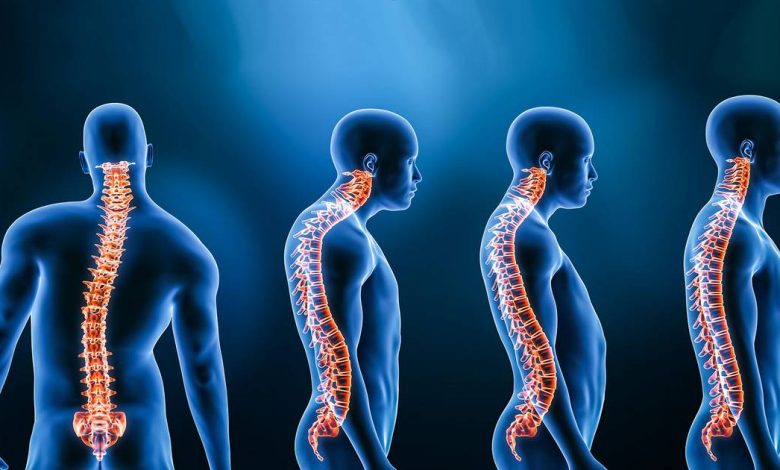Lordosis, hunched back: what is this, causes, symptoms, diagnostics, treatment, prevention

Lordosis – lumbar; Swayback; Arched back; Lordosis – lumbar
What is lordosis?
Lordosis is a state, in which the spine flexes abnormally inwards, which leads to a hunched posture. It is also known as sagging back or lumbar hyperlordosis.. Lordosis is a state, which affects the muscles and bones of the spine, causing it to bulge inwards. This may cause pain, decreased mobility and other health problems.
Causes of lordosis
The most common cause of lordosis is poor posture.. When you stand or sit for a long period of time, muscles in the lower back and abdomen may become weak or tense, which leads to excessive curvature of the spine.
Poor posture can also be caused by lifestyle habits, such as prolonged sitting, wearing high heels or carrying heavy loads.
Other causes of lordosis include obesity, pregnancy and certain diseases, such as osteoporosis, muscular dystrophy and spina bifida.
Symptoms of lordosis
The most common symptom of lordosis is slouching when standing or sitting.. Other symptoms may include pain in the lower back, difficulty standing or sitting for long periods of time and difficulty leaning forward or backward.
Diagnosis of lordosis
To diagnose lordosis, a doctor usually performs a physical examination, which may include assessing the patient's posture, range of motion and strength.
In some cases, x-rays may be ordered., computed tomography or MRI to further evaluate the spine and identify any underlying conditions, which can cause lordosis.
Lordosis treatment
Treatment for lordosis depends on the underlying cause.
If lordosis is caused by poor posture, your doctor may recommend exercise therapy or a special exercise program to strengthen your lower back and abdominal muscles.
If lordosis is caused by an underlying disease, the doctor may recommend medication or surgery.
In some cases, wearing a brace can help reduce spinal curvature and relieve symptoms..
Prevention of lordosis
Although lordosis cannot be prevented, there are steps, you can take, to reduce the risk of developing this condition.
Maintain good posture, when you are sitting or standing, regular stretching and avoidance of activities, putting pressure on the lower back, may help reduce the risk of lordosis.
Besides, maintaining a healthy weight, avoiding high heels and avoiding activities, that cause stress on the back, may also help prevent lordosis.
Used literature and sources
Mistovich RJ, mirror DA. The spine. In: Kliegman RM, St. Geme JW, Bloom NJ, Shah SS, Tasker RC, Wilson KM, eds. Nelson Textbook of Pediatrics. 21st ed. Philadelphia, PA: Elsevier; 2020:chap 699.
Warner WC, Sawyer JR. Scoliosis and kyphosis. In: Azar FM, Beaty JH, eds. Campbell’s Operative Orthopaedics. 14th ed. Philadelphia, PA: Elsevier; 2021:chap 44.
